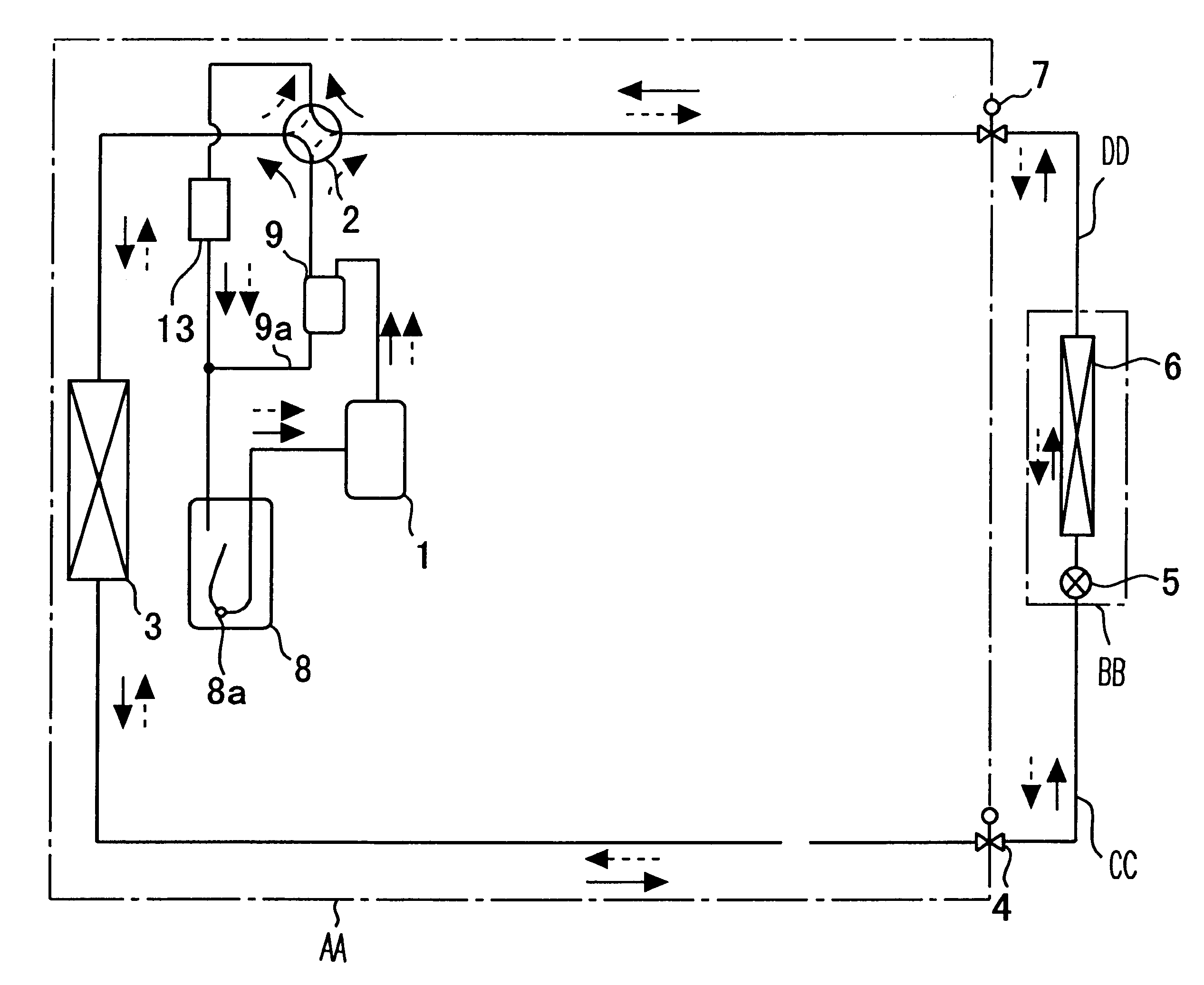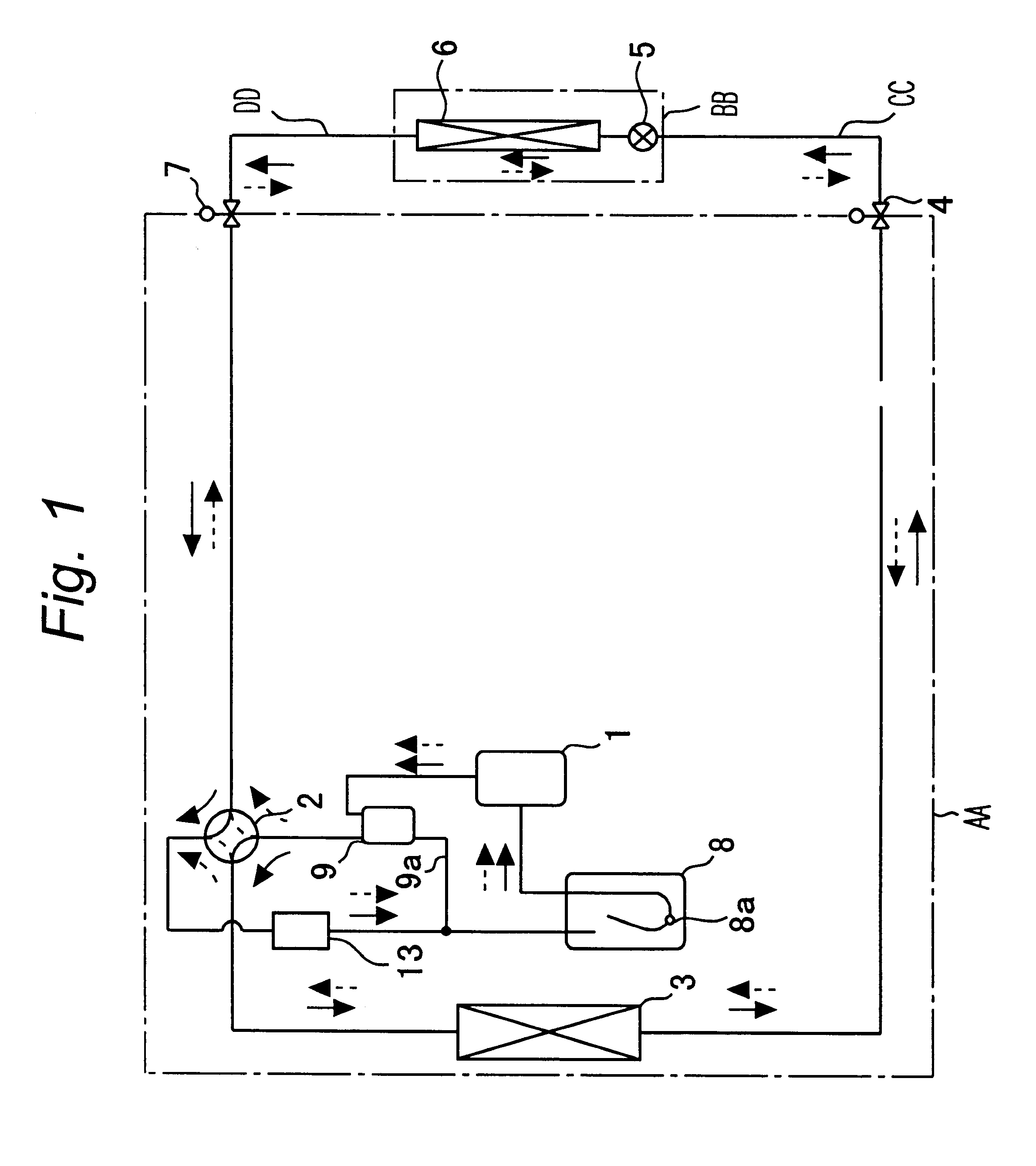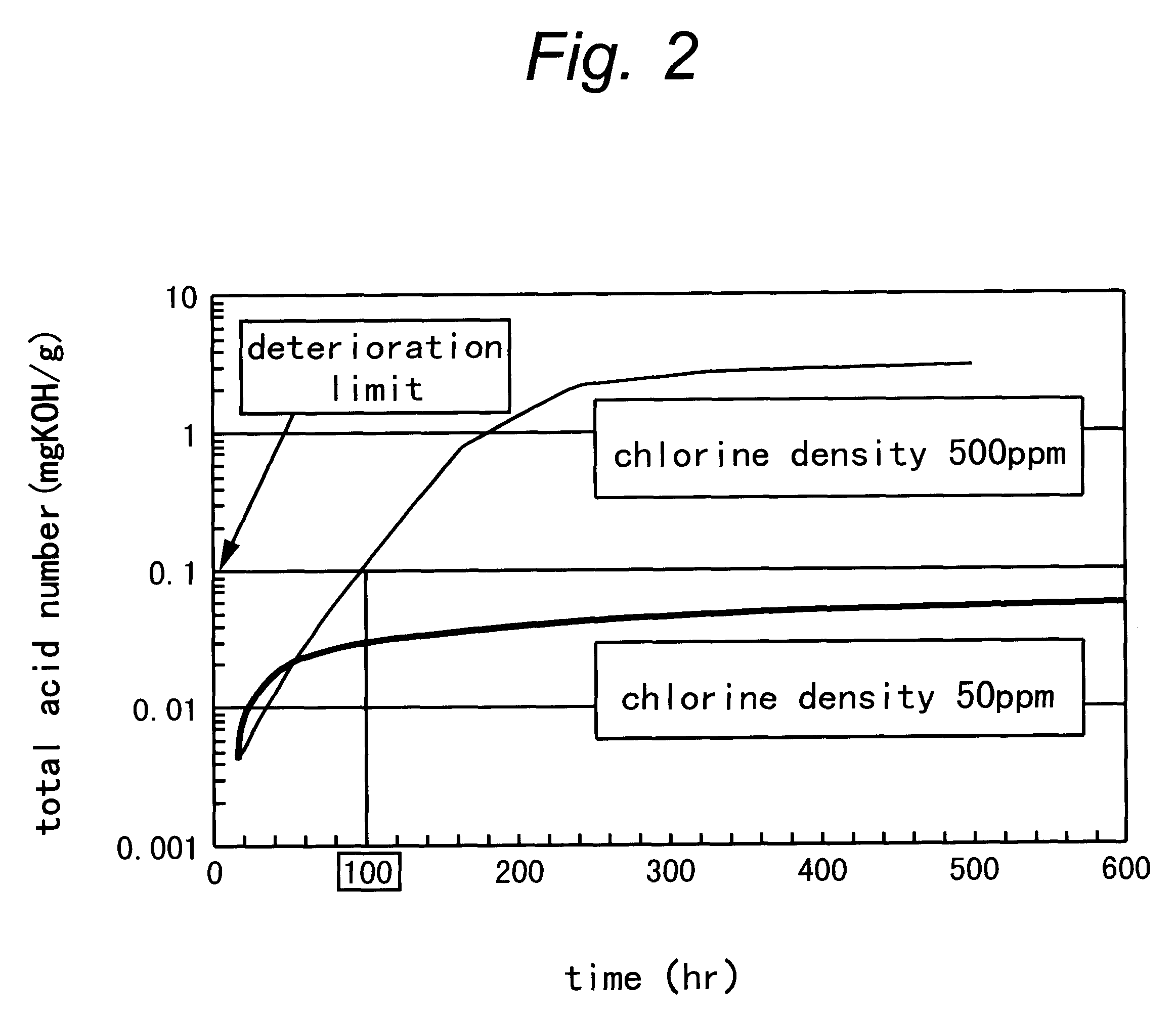Refrigeration system, and method of updating and operating the same
a refrigeration system and air conditioning technology, applied in refrigeration machines, refrigeration components, light and heating apparatus, etc., can solve the problems of difficulty in replacing connecting pipes with new pipes, and deterioration of hfc refrigeration oil
- Summary
- Abstract
- Description
- Claims
- Application Information
AI Technical Summary
Benefits of technology
Problems solved by technology
Method used
Image
Examples
first embodiment
FIG. 1 is a schematic diagram showing a refrigerant circuit of a refrigeration system which effects heat exchange by means of a refrigerant, as an example refrigeration system according to a first embodiment of the present invention.
In FIG. 1, reference symbol AA designates a heat source unit accommodating a compressor 1, a four-way valve 2, a heat exchanger 3 on a heat-source-unit-side , a first control valve 4, a second control valve 7, an accumulator 8, an oil separator 9 (corresponding to oil separation means), and extraneous-matter trapping means 13.
The oil separator 9 is provided in an outlet pipe of the compressor 1 and separates a refrigeration oil which is discharged from the compressor 1 together with a refrigerant. The extraneous-matter trapping means 13 is interposed between the four-way valve 2 and the accumulator 8. Reference numeral 9a designates a bypass channel extending from the bottom of the oil separator 9 to a downstream position relative to the exit of the extr...
second embodiment
FIG. 8 is a schematic diagram showing a refrigerant circuit of a refrigeration system which effects heat exchange by means of a refrigerant, as an example refrigeration system according to a second embodiment of the present invention.
In FIG. 8, reference symbol AA designates a heat source unit accommodating a compressor 1, a four-way valve 2, heat exchangers 3a and 3b on heat-source-unit-side, a first control valve 4, a second control valve 7, an accumulator 8, an oil separator 9 (corresponding to oil separation means), and extraneous-matter trapping means 13.
The oil separator 9 is interposed between an outlet pipe 21 of the compressor 1 and an inlet pipe 22 of the four-way valve 2 for separating a refrigeration oil discharged from the compressor 1 together with a refrigerant and for discharging the thus-separated refrigeration oil to a refrigeration oil return pipe 23. The return pipe 23 is connected to a branch line 25 at a junction 24, and the branch line 25 is connected, by way ...
third embodiment
FIG. 10 is a schematic diagram showing a refrigerant circuit of a refrigeration system, as an example refrigeration system according to a third embodiment of the present invention. In FIG. 10, reference symbols BB to DD, reference numerals 1 through 9, and reference numerals 8a and 9a are the same as those employed in the first embodiment, and hence repetition of their detailed explanations is omitted here.
Reference numeral 12a designates cooling means (a cooling device) for cooling and liquefying a hot, high-pressure gaseous refrigerant; 12b designates heating means (a heating device) for evaporating a low-pressure two-phase refrigerant; 13 designates extraneous-matter trapping means (an extraneous-matter trapping device) provided at the exit of the heating means 12b; 14a designates a first electromagnetic valve disposed at the exit of the extraneous-matter trapping means 13; and 14b designates a second electromagnetic valve disposed at the entrance of the heating means 12b.
Referen...
PUM
 Login to View More
Login to View More Abstract
Description
Claims
Application Information
 Login to View More
Login to View More - R&D
- Intellectual Property
- Life Sciences
- Materials
- Tech Scout
- Unparalleled Data Quality
- Higher Quality Content
- 60% Fewer Hallucinations
Browse by: Latest US Patents, China's latest patents, Technical Efficacy Thesaurus, Application Domain, Technology Topic, Popular Technical Reports.
© 2025 PatSnap. All rights reserved.Legal|Privacy policy|Modern Slavery Act Transparency Statement|Sitemap|About US| Contact US: help@patsnap.com



